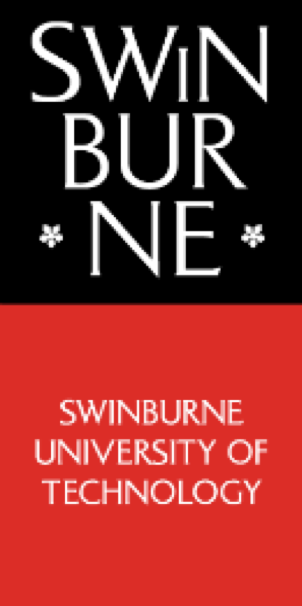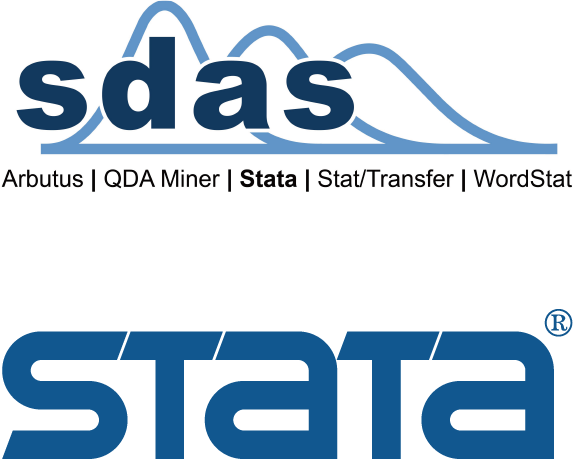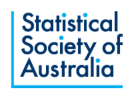The Young Statisticians Conference 2019 held earlier this month was a roaring success. As part of this event, SSA Canberra was proud to sponsor two local students, Zhi Yang Tho and Yuehan (Joyce) Zhang, to attend the conference, listen and present their research, and most importantly expand their network and sow the seeds of future collaborations with other early career statisticians around Australia.We are honored to have both present their experiences of YSC, and you can read more about below.
Francis Hui, Warren Muller, Phil Tennant
On behalf of SSA Canberra
------------------------------------------
Zhi Yang Tho
The Young Statisticians Conference 2019 (held at Manuka Oval, Canberra) has been a wonderful and eye-opening experience for me as this was my first time attending an academic experience. I am grateful to be able to present my Honours research project to colleagues from a similar field of study. I also received feedback that can certainly help to improve the project. The conference included talks on a diverse range of topics, such as Population and Economics, Mathematical Statistics, Bioinformatics and Computer Science. I learnt a lot about the current trend and new findings in these fields from the presentation of the research projects of the other presenters.
The keynote speeches delivered in this conference were inspiring and helpful. Teresa Dickinson, Deputy Australian Statistician, gave an interesting talk about the role of Australian Bureau of Statistics in providing official statistics to inform Australia’s important decisions. Dr Alison’s speech with the topic “The Art of Literate Projecting” provided insight about good literate projecting practices that are important in accomplishing a successful project. Besides, the careers panel gave useful information about future career pathway for all young statisticians.
The Young Statisticians Conference was not just about talks. We also had two social events, which is the pre-conference Trivia Night on Monday evening and a conference dinner on Tuesday evening. The Trivia Night hosted by Francis, Emi, and Nidhi was fun and entertaining. The conference dinner was held at the Kingston Hotel to celebrate women in Statistics. In this event, sponsored by ACEMS, we created Wikipedia pages for women who had contributed to the field of Statistics. The conference dinner was a good way for delegates to socialise with each other and I had an interesting discussion about robust statistics with other delegates in the dinner.
I would like to thank Statistical Society of Australia Canberra branch for sponsoring my registration to attend the conference, and the organisers of the Young Statisticians Conference for such a wonderful event.
Zhi Yang Tho
03/10/2019
------------------------------------------------
Yuehan (Joyce) Zhang
It has been a great experience attending the 2019 Young Statisticians Conference as a student supported by the Statistical Society of Australia, Canberra Branch. I got to meet many intelligent young statisticians through this conference. Personally I think this conference was very well organised and very successful. I fully enjoyed the two-day event with so many interesting seminars, presentations, and a career panel.
On the first day, Teresa Dickinson, deputy Australian statistician from the Australian Bureau of Statistics (ABS), introduced the work of Big Data that ABS is doing now. I have heard about big data and machine learning when I was a master student in China. After hearing Teresa’s presentation, I am now clearer about the concept of big data and how statistical analysis on big data differs from traditional statistical analysis. I am impressed by the ABS’s statisticians’ enthusiastic attitude on big data and how organised the work has been conducted.
Many PhD candidates presented their work throughout the conference. The models of maths and statistics are sometimes hard to understand, however, I am so impressed by the way they presented their work in a way such that other people can understand easily. Many PhD students explained their models step by step, how they perfected the models, and use data to prove how the models were improved. From their presentations, I deeply feel that statistics is the future. Take epidemiology for example, many of the diseases has been studied by previous researchers, nowadays the hard part is how to look at the diseases in a deeper way. Statistics can help epidemiologists better interpret their findings.
I enjoyed the career panel the most. I really want to thank the organisers was creating such a career panel. As a PhD student myself, I sometimes can be confused about my future. Professor Louise Ryan’s speech in particular was really encouraging.. Like her, I’m also more likely to choose the harder way in life. She let me know that a person can only grow through hard work and experience, that choosing an easier way doesn’t mean life will be easy afterwards, and that it doesn’t matter if you’re not a good planner, as long as you follow your heart, you will learn to enjoy your life sooner or later.
I’m also impressed by the organisers of this conference. They cooperated with each other so well, and they seem really close to each other. I like the atmosphere of the Statistical Society Australia as well, but particularly the Canberra Branch. I appreciate their work and have benefited very much from this conference.
Yuehan Zhang
03/10/2019










